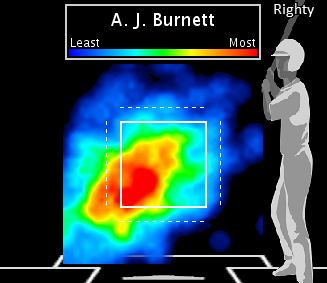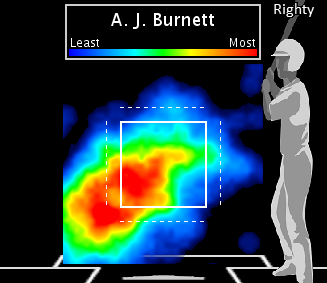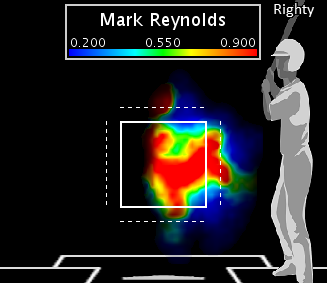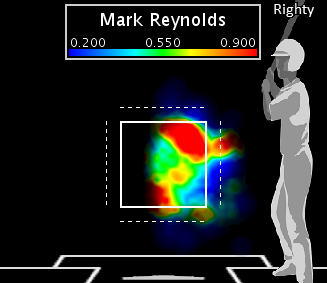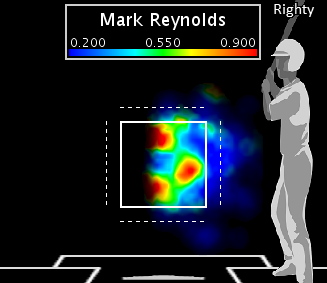Why Rick Porcello Will (Finally!) Break Out in 2014
 David Golebiewski |
David Golebiewski |  Tuesday, February 4, 2014 at 5:00AM
Tuesday, February 4, 2014 at 5:00AM
Now a half-decade into his big league career, Rick Porcello has yet to become the stud pitcher the Tigers envisioned when the club made him the most handsomely-paid high-schooler in draft history. Porcello has been good for about 170 innings pitched per season, avoiding the injury pitfalls that claim many young arms, but those innings have been pedestrian. His career ERA, adjusted for park and league run scoring levels, is five percent below average. Not terrible, but not what you're hoping for from a guy who received more guaranteed cash than than any 2007 draftee not named David Price.
But don't despair, Tigers fans -- Porcello looks primed for a breakout in 2014. The 25-year-old will at long last get some defensive support from his infielders, and he now has a reliable breaking pitch that's missing bats and helping his fastball play up.
Goodbye Prince, Hello Jose Iglesias
As a ground ball-centric, pitch-to-contact starter, Porcello couldn't have been a worse fit for Tigers teams of recent vintage. Detroit basically punted infield defense over the past few years, tolerating the fall-down range of Miguel Cabrera and Prince Fielder at the corners in order to churn out as many runs as possible. Porcello suffered: He had a .263 batting average on balls in play on grounders last season, which was 23 points higher than the major league average.
In 2014, though, Porcello's infield D might actually do him some favors. The Fielder-Ian Kinsler swap transformed Detroit's infield, bringing in a superb second baseman, shifting Miggy Cabrera to the cold corner and jettisoning Fielder's iron glove. Kinsler was 11 runs better than an average player at the keystone in 2013, according to John Dewan's Defensive Runs Saved metric. Cabrera was terrible at third (-18 DRS), so replacement Nick Castellanos merely needs to show more range than a mastodon stuck in the La Brea Tar Pits to be an upgrade. At first, Cabrera should be less of a liability than Fielder (-13 DRS).
Porcello will also benefit from a full season of Jose Iglesias' breath-taking D at shortstop. The former Red Sock rated as an average defender according to DRS last year, but he was +7 in limited time in 2012 and has a sterling reputation. Plus, .
Porcello's New Weapon
While Porcello should get far more support when he puts the ball in play, he's already helping himself by removing defense from the equation entirely. Porcello's strikeout rate spiked from 13.7 percent of batters faced in 2012 to 19.3 percent in 2013, which actually bested the MLB average for starters (18.9 percent). What changed? The righty threw fewer fastballs and made his curveball a vital part of his arsenal, equipping him with a quality breaking pitch for the first time.
Porcello used his fastball about 67 percent of the time in 2012, the third-highest clip in the AL behind Henderson Alvarez and Joe Saunders. He had to lean heavily on his heat, because his breaking ball of choice -- a short mid-80s slider -- pretty muched turned every hitter he faced into Miggy (opponents slugged .633 against the pitch).
In 2013, though? Porcello cut back on the fastballs (61.7 percent) and nearly shelved his slider in favor of a high-70s curveball (thrown 16.6 percent of the time). Porcello's hook got swings and misses 29.6 percent of the time, slightly above the 29.2 percent MLB average. While his slider got slaughtered, Porcello held opponents to a .303 slugging percentage with his curve. Porcello's curve might make his fastball more effective, too considering that he now has a less predictable pitch mix. He got a whiff with his fastball 15.9 percent of the time in 2013, up from 13.3 percent in 2012.
Still in his mid-twenties, Porcello has treaded water to this point in his career by displaying sharp command and preventing homers. Now that he's backed by quality defenders and can fan hitters with his curve, this former bonus baby is about to bust out.
 Curve ball,
Curve ball,  Strikeouts,
Strikeouts,  Tigers,
Tigers,  analysis | tagged
analysis | tagged  Detroit Tigers,
Detroit Tigers,  FIP,
FIP,  Ian Kinsker,
Ian Kinsker,  Jose Iglesias,
Jose Iglesias,  Nick Castellanos,
Nick Castellanos,  Prince Fielder,
Prince Fielder,  Rick Porcello,
Rick Porcello,  breakout,
breakout,  defense,
defense,  infield,
infield,  strikeouts
strikeouts

